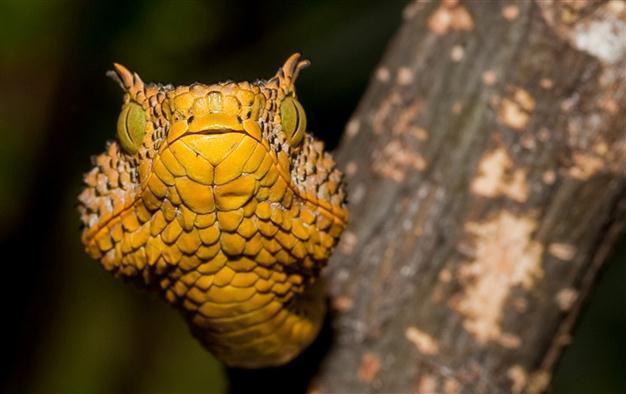With its vast, diverse landscapes, Tanzania is home to a wide array of wildlife, including some of the world’s most venomous snakes. The question of whether there are venomous snakes in Tanzania can evoke both fascination and a sense of caution. This East African country hosts a variety of venomous snakes, such as the black mamba and the puff adder, which are known for their potent venom and significant medical importance.
Historically, Tanzania’s terrain and climate have provided an ideal habitat for these reptiles, allowing them to thrive. Statistically, snakebites are a public health concern in Tanzania, with an estimated incidence of 250 snakebite cases per 100,000 people annually. The presence of these venomous snakes has necessitated advancements in local medical responses and the availability of antivenom, crucial for treating snakebite victims in this region.

Venomous Snakes Commonly Found in Tanzania
Tanzania is home to a variety of venomous snakes that thrive in its diverse ecosystems. One of the most well-known species is the black mamba, which is both highly agile and extremely venomous. This snake can be found in the savannas and rocky areas, often causing a sense of caution among locals and tourists. Although they are not typically aggressive towards humans, encounters can be dangerous. The black mamba’s speed and potent venom make it one of the most feared snakes in the region.
Another dangerous species in Tanzania is the puff adder, recognized by its thick body and distinctive markings. It is responsible for the majority of snakebite incidents in sub-Saharan Africa. The puff adder’s ability to camouflage in its environment makes it a common threat. It remains motionless to avoid detection and strikes quickly when provoked. Visitors must stay vigilant when exploring the countryside to avoid accidental encounters.
The boomslang is another venomous snake that calls Tanzania home. Its venom causes severe internal bleeding that can be fatal without timely medical intervention. Unlike the black mamba and puff adder, the boomslang is arboreal, meaning it spends most of its time in trees. This snake relies on its excellent eyesight to hunt small prey like birds and lizards. Spotting one can be a challenge due to its green coloration, which blends seamlessly with the foliage.
Lastly, the spitting cobra is notable for its unique defensive mechanism. When threatened, it can project venom from its fangs, aiming for the eyes of its attacker. This venom can cause temporary or permanent blindness if not treated promptly. According to the article, here is the article, and document some occurrences can help mitigate the fear and ensure safety on a Tanzania safari. Understanding these behaviors allows both locals and tourists to take necessary precautions while exploring the stunning landscapes of Tanzania.
Identifying the Species: Black Mamba, Puff Adder, and More
Identifying venomous snakes in Tanzania involves understanding their physical characteristics and behaviors. The black mamba, for instance, is usually between 2 to 4 meters long and has a distinctive dark gray to brown color. When threatened, it opens its mouth, revealing a black interior that gives it its name. This snake is known for its incredible speed, capable of moving at 20 km/h. Observing these traits can help in quickly identifying this dangerous species.
The puff adder, on the other hand, is shorter and heavier than the black mamba. It typically reaches lengths of 1 meter and has a stout body. This snake’s coloration includes a mix of brown, yellow, and gray, allowing it to blend into its surroundings. The puff adder’s lethargic nature makes it easy to overlook, increasing the risk of accidental encounters. Staying alert and recognizing its distinctive triangular head is essential for safety.
Smaller but equally dangerous is the boomslang, which is usually around 1 to 1.6 meters long. It has large eyes and a deep green coloration that helps it hide in trees. The boomslang’s slender body and arboreal lifestyle make it less likely to be seen on the ground. Despite its size, this snake delivers highly potent venom that can cause severe internal bleeding. Observing trees and high vegetation is important when identifying this species.
Other venomous snakes in Tanzania include the spitting cobra, known for its defensive behavior. This snake can spit venom with great accuracy, targeting the eyes of its predator. It is usually 1.2 to 1.8 meters long and comes in various colors, such as black, brown, and red. According to this post, recognizing these characteristics can help in identifying and avoiding these dangerous snakes. Stay informed about the local wildlife to ensure a safer experience in Tanzania.
Health Risks Associated with Venomous Snake Bites in Tanzania
Venomous snake bites in Tanzania pose serious health risks to both locals and tourists. Symptoms can vary depending on the snake species, with some bites causing intense pain, swelling, and tissue damage. Others may lead to more severe issues like paralysis, bleeding disorders, or respiratory failure. Immediate medical attention is crucial to manage these symptoms effectively. Delays in treatment can result in long-term disabilities or even death.
One of the major concerns with snake bites is the availability and accessibility of antivenom. In rural areas, where medical facilities are scarce, accessing antivenom can be challenging. This issue is further complicated by the need for specific antivenoms for different snake species. According to health officials, ensuring a steady supply of antivenom in health centers is a top priority. Proper health planning and resource allocation are essential steps in mitigating this risk.
Statistics show that snake bites are a significant public health concern in Tanzania, particularly during the rainy season when snakes are more active. Farmers, hunters, and children are at higher risk due to increased outdoor activities. The World Health Organization (WHO) estimates that thousands of people in Tanzania are bitten by snakes each year. Public awareness campaigns and education about snake habitats can help reduce these incidents.
Preventive measures such as wearing protective clothing and using snake repellents can reduce the risk of snake bites. Simple steps like remaining vigilant in snake-prone areas and avoiding tall grass or rocky terrains can make a big difference. Government and community efforts to improve healthcare infrastructure are critical for effective prevention and treatment. According to the article, collaborative efforts between health workers and local communities can help manage the health risks posed by venomous snake bites in Tanzania.
Preventative Measures and Safety Tips for Tourists on a Tanzania Safari
When exploring the beauty of Tanzania wildlife, it’s essential to be aware of potential risks and take preventative measures. One effective way to avoid venomous snakes is to stay on well-trodden paths and avoid tall grass. Wearing long pants and sturdy boots can provide an additional layer of protection. Regularly checking your surroundings and undergrowth can help spot any hidden dangers. Staying alert and observant is key to a safe safari experience.
Camping safety is another critical aspect when on a Tanzania safari. Setting up your tent in a clear, open space away from dense vegetation can reduce snake encounters. Make sure to zip your tent closed at all times to prevent snakes from entering. Carrying a torch or flashlight for nighttime trips can help you see where you’re stepping. Always shake out bedding and clothing before use to ensure no lurking critters.
It is advisable to carry a basic first aid kit that includes supplies for treating snake bites. Tourists should learn basic first aid steps, such as keeping the affected limb immobile and at heart level. Knowing the nearest healthcare facilities and emergency contacts is crucial. Safari guides are usually well-trained in handling such situations and can offer immediate assistance if needed. Following their advice and instructions can make a significant difference in an emergency.
Guided tours are generally safer on a Tanzania safari as experienced guides know how to minimize risks. They can identify snake habitats and provide valuable information about local wildlife. Guides often carry communication devices for emergencies, ensuring help is on hand if needed. Opting for guided tours can enhance your safety and overall safari experience. Trusting the expertise of local guides will allow you to enjoy the adventure worry-free.
Education and awareness play a significant role in preventing snake bites. Before embarking on a safari, take time to read up on local wildlife and common hazards. Many lodges and camps offer briefings on safety measures and what to do in case of an encounter with dangerous creatures. Being informed equips you to respond appropriately and reduces panic. Knowledge is a powerful tool in ensuring a memorable and safe safari.
Key Takeaways
- Tanzania has many venomous snakes like the black mamba and spitting cobra.
- Venomous snakes in Tanzania pose significant health risks without prompt treatment.
- Avoiding snake encounters requires caution and awareness, especially in rural areas.
- Tanzania’s diverse landscapes create ideal habitats for various venomous snake species.
- Proper education and safety measures can minimize the risk of snake bites.

